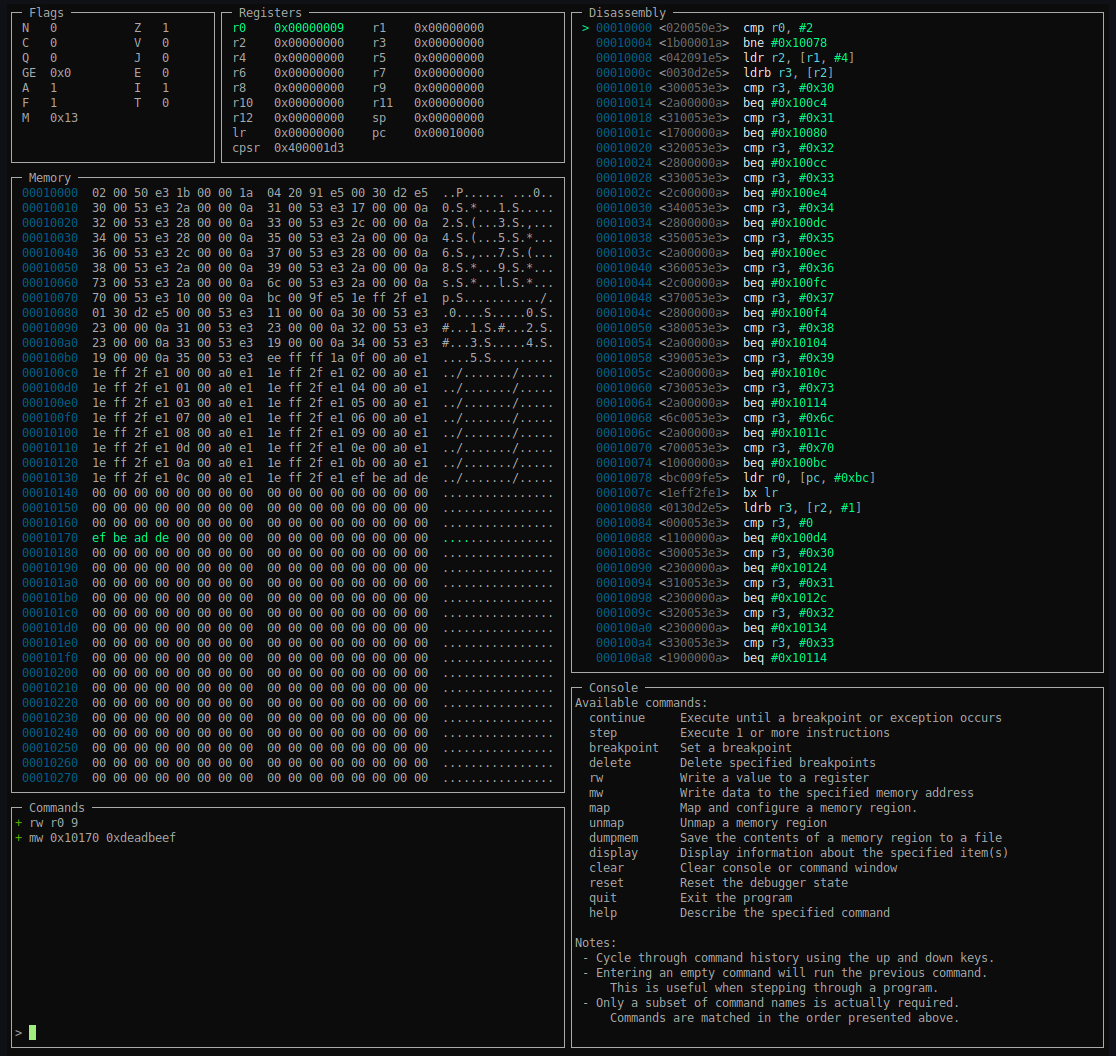aemulari is a little Go-based console UI front-end for Unicorn, using Capstone, capstr, and gocui. I wrote it to help me think through 32-bit ARM bare-metal code that I was otherwise reverse engineering statically.
Why this tool? For whatever reason, QEMU and GEF just wasn't doing it for me, so I built the tool I wanted.
At the moment, you should consider this an open source project that's pretty much entirely inactive, as I haven't really touched it much since 2018, where I presented it at BSidesROC.
I originally intended to keep working on it to release something more featureful, but alas, how time flies. I never got around to it.
If you're interested in taking this further, please reach out before forking. I may be interested in picking this back up to actively maintain, as I use it from time to time. Personally, I'd say efforts are better spent investing in something based upon usercorn. :)
- Unicorn - CPU Emulator Framework
- libunicorn.so.1
- libunicorn Go bindings
- Capstone - Disassembly Framework
- libcapstone.so.1
- Go bindings: capstr
- gocui - Console UI library
The provided Makefile will fetch and build Go dependencies.
However, you will first need to build and install libunicorn and libcapstone on your own.
For both of those, the build process is pretty simple:
git clone <repo>
mkdir <repo>/build && cd <repo>/build
cmake -DCMAKE_INSTALL_PATH=/usr/local
make
sudo make install
To the great displeasure of Gophers everywhere, there's a Make-based build. (I learned Go in 2017 to write this... I was already behind the times WRT gomods and a proper build setup.)
Run make and aemulari-cui and aemulari will be build and written to a
bin/ directory. The former is the UI, while the latter was intended for batch
execution.
Below is the help text for the aemulari-cui tool, which can be viewed via --help.
aemulari-cui -- Console UI frontend for the aemulari debugger (v0.1.0)
Usage: aemulari-cui [options]
Options:
-a, --arch <arch> Architecture to emulate. (default: arm)
-r, --reg <name>=<value> Assigns the initial value of a register.
-m, --mem <region> Memory region to map and optionally load or dump.
-b, --break <addr> Set a breakpoint at the specified address.
-h, --help Show this text and exit.
Supported Architectures and Initial Modes:
arm 32-bit Arm
arm:thumb 32-bit Arm in Thumb mode
Memory Mapped Regions:
Memory mapped regions are specified using the following syntax:
<name>:<addr>:<size>:[perms]:[input file]:[output file]
- An executable region named "code" is required.
- Only the <name>, <address>, and <size> fields are required. When including
an optional field, all preceding optional fields must be specified well.
- The [perms] field specifies the access permissions of a region using the
characters 'r', 'w', and 'x' for read, write, and execute, respectively.
If not specified, a default of "rwx" is used.
- If specified, the contents of [input file] will be loaded into the region.
- If specified, a memory region's contents will be written to [output file].
Notes:
- Numeric parameters may be specified in decimal format or in hex format,
prefixed with "0x" (e.g., 0x1b4d1d3a).
- Available GUI commands can be viewed by running the "help" command.
Example:
Run myprogram.bin with memory at 0x48000 initialized with the contents
of a mydata.bin file.
aemulari -m code:0x10000:0x1000:rx:./myprogram.bin \
-m mydata:0x48000:0x200:rwx:./mydata.bin
A couple of known issues are presented here.
